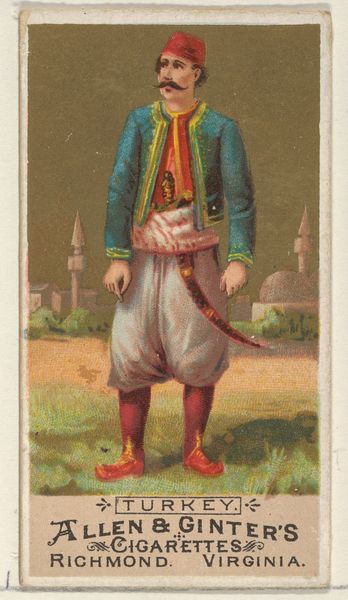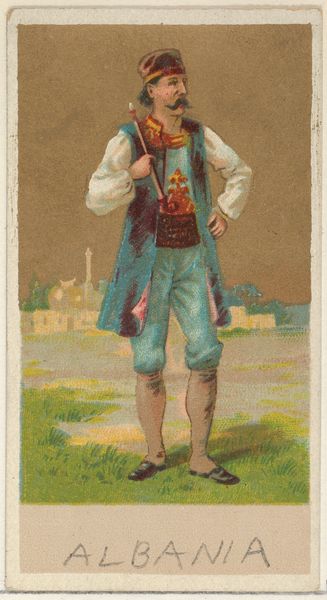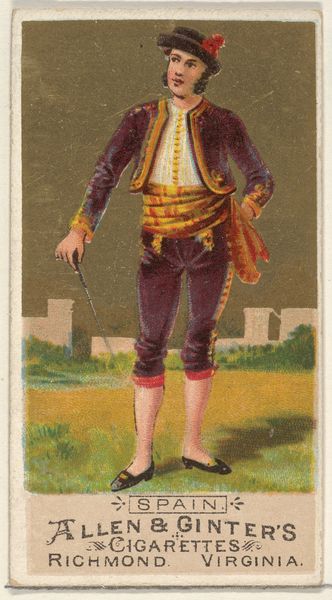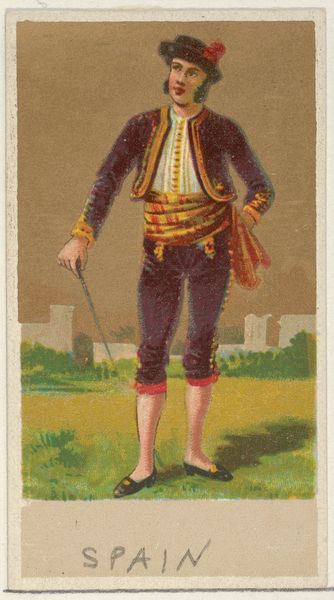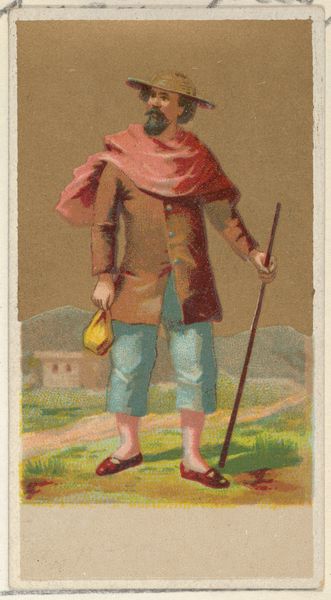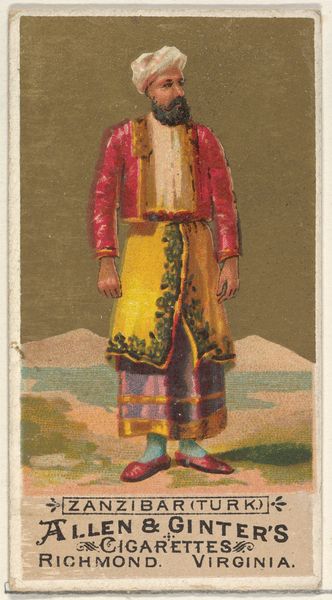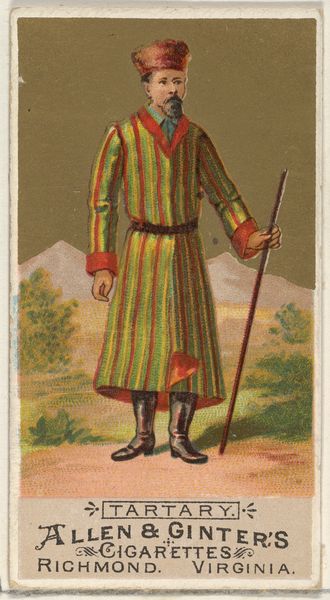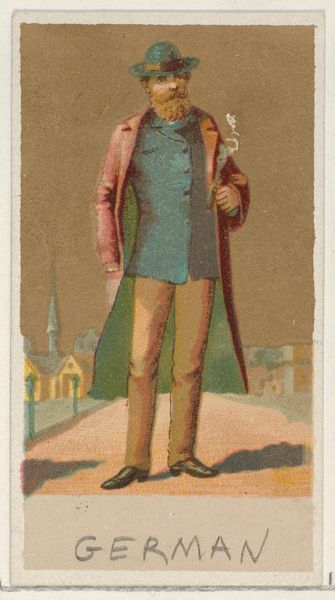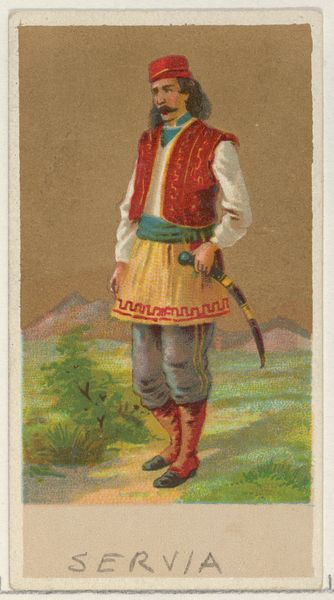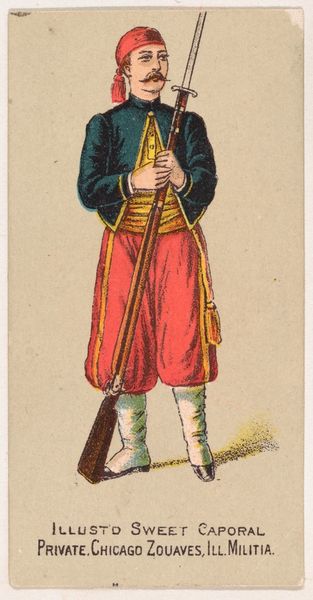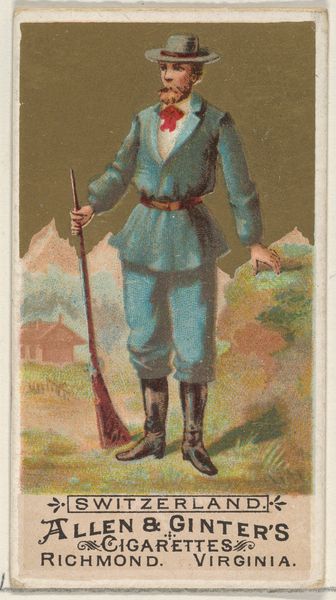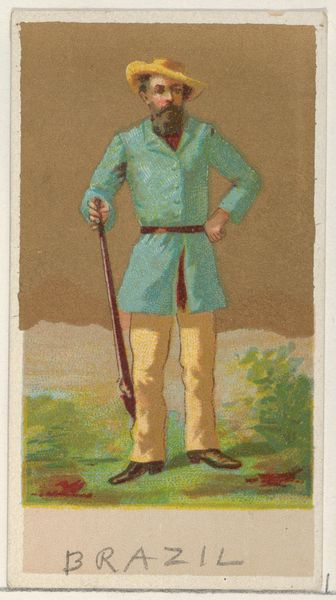
Turkey, from the Natives in Costume series (N16), Teofani Issue, for Allen & Ginter Cigarettes Brands 1886 - 1900
0:00
0:00
drawing, print
#
portrait
#
drawing
# print
#
caricature
#
coloured pencil
#
orientalism
#
men
#
genre-painting
#
portrait art
Dimensions: Sheet: 2 3/4 x 1 1/2 in. (7 x 3.8 cm)
Copyright: Public Domain
Curator: This print, titled "Turkey, from the Natives in Costume series," dates from between 1886 and 1900. It comes to us from the Allen & Ginter company and employs colored pencil. Editor: My first thought is "Orientalism"—a potent, if complicated, aesthetic. There’s something almost cartoonish about this figure, yet he’s rendered with a degree of specificity in his clothing and the background architecture. Curator: Precisely! These cards were inserted into cigarette packs, part of a broader marketing strategy that exoticized foreign cultures to appeal to consumers. What appears as innocent portraiture is deeply intertwined with power dynamics and trade. Editor: I'm particularly struck by the subject's averted gaze. He's *present* but not engaging. I read that as a kind of distancing, emphasizing the 'otherness' that was so appealing, or useful, to the commercial interests of the time. Also note the soft rendering, it softens the imperialist aspect of that image, which makes it somehow even more insidious. Curator: Absolutely. The composition places the man against a vaguely defined background, evoking a sense of distance both geographic and cultural. It reflects the Western gaze shaping perceptions of the Ottoman world during a period of intense geopolitical maneuvering. His presence is literally manufactured, carefully constructed to support brand recognition, embedded in what seems like an innocent portrait of tradition. Editor: The "Natives in Costume" title is loaded with problematic implications, creating a sense of display. By portraying people as costumes, it simplifies cultural identity into something easily consumable. The male subject becomes another commercial object devoid of individual voice and cultural nuances. The male figure, reduced to a marketing strategy. Curator: This points to the complicated role of art in society. What’s framed as popular entertainment is actively shaping public perceptions, normalizing hierarchies, and subtly embedding cultural stereotypes. Editor: Seeing it now, I feel unease knowing that the man is probably very far from the artist, if the artist ever travelled to the place this person originated. Curator: Indeed. What seems at first glance a simple portrait turns into a layered text about the projection of identity. Editor: Looking at it with a more critical eye makes me want to unpack the multiple meanings associated with cultural exchange and commodification, which remain deeply relevant to art produced today.
Comments
No comments
Be the first to comment and join the conversation on the ultimate creative platform.
